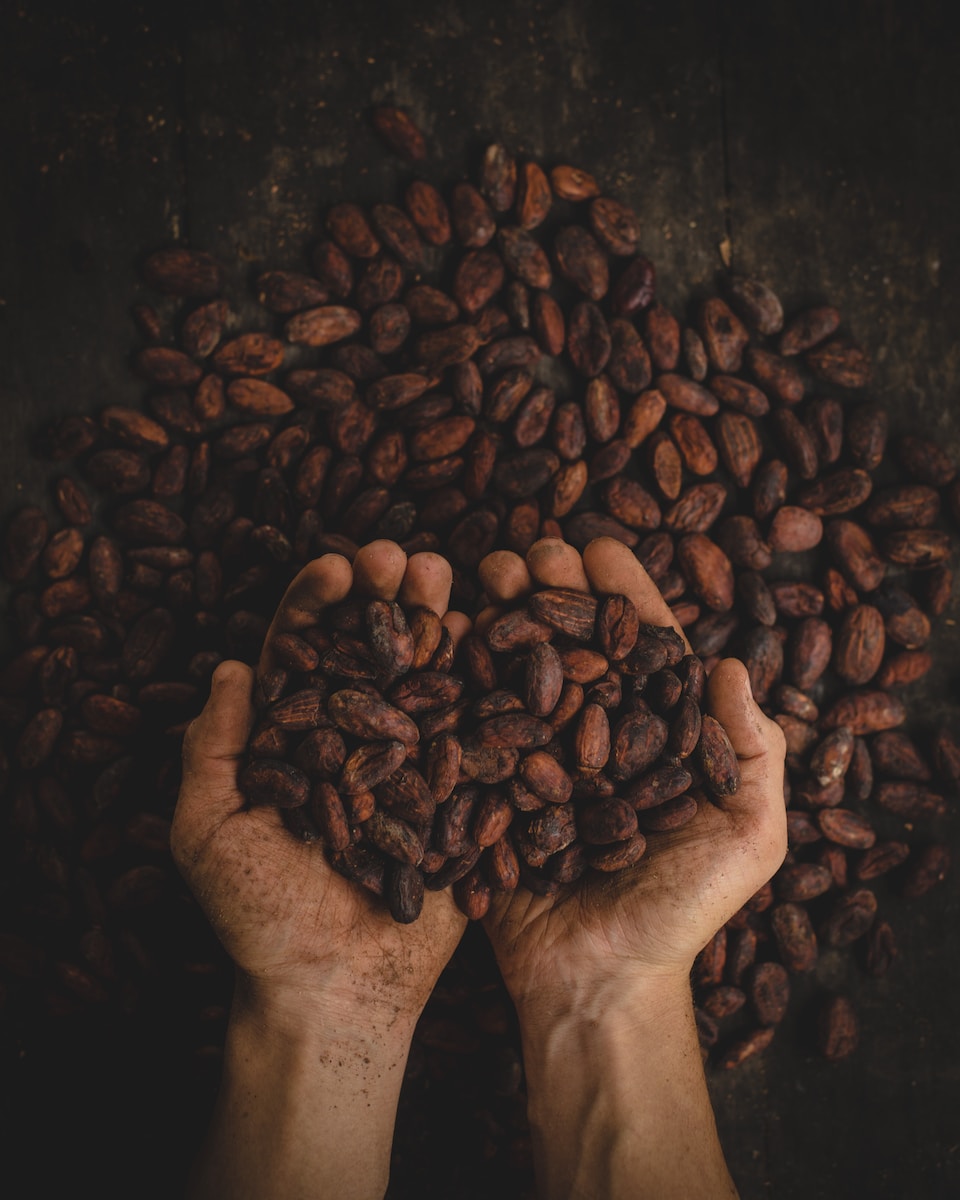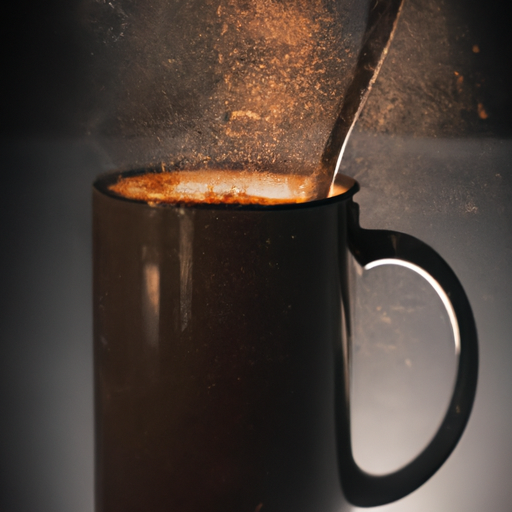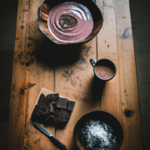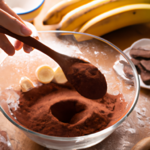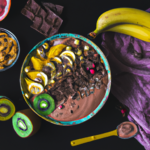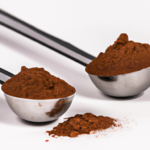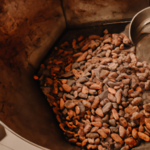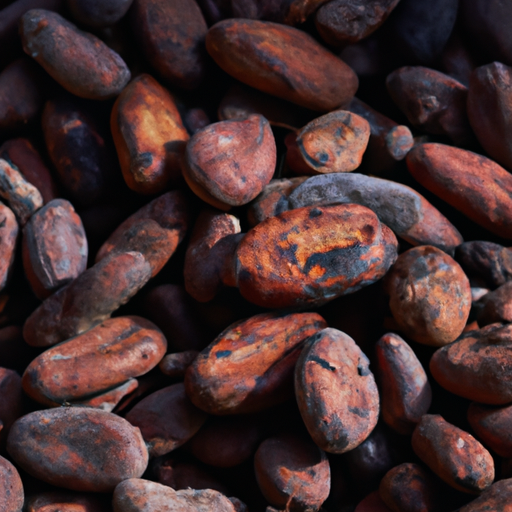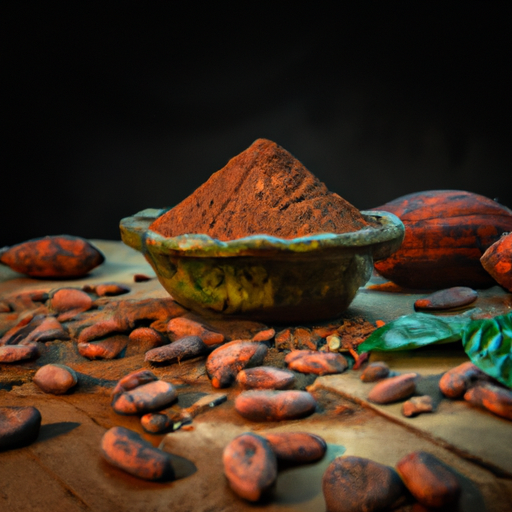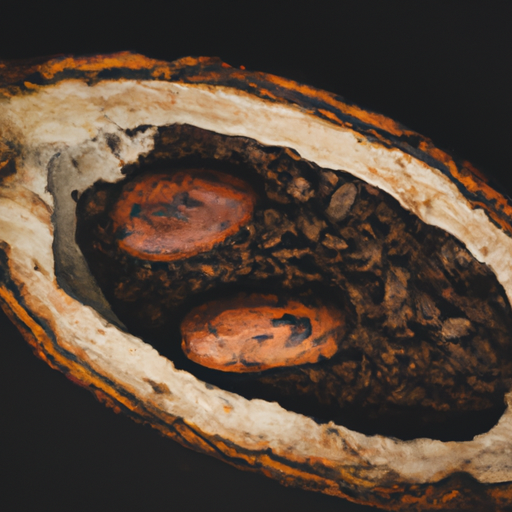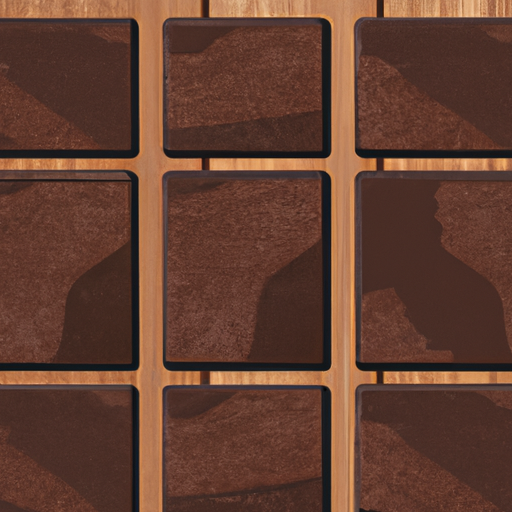Why raw cacao powder, you ask? Well, let me tell you the tantalizing truth about this tempting treat.
Raw cacao powder is not just your average cocoa powder; it’s a powerhouse of health benefits that will leave you craving for more. Packed with antioxidants, minerals, and vitamins, raw cacao powder is a delicious way to boost your well-being.
Its versatility in recipes is astounding, allowing you to whip up delectable desserts, smoothies, and even savory dishes. But that’s not all! This magical ingredient also provides a natural energy boost, making it the perfect pick-me-up during those sluggish moments.
And let’s not forget about its heart-healthy benefits, anti-inflammatory properties, and mood-enhancing effects. Plus, it can even aid in weight management.
So, if you’re ready to indulge in a guilt-free pleasure that nourishes your body and soul, get ready to embrace the wonders of raw cacao powder. Trust me, it’s a game-changer.
Get ready to discover the amazing health benefits of raw cacao powder! Not only does it taste delicious, but it also has a wide range of benefits for your overall well-being.
First and foremost, raw cacao powder is packed with antioxidants, which help fight off free radicals and reduce the risk of chronic diseases. It is also a great source of magnesium, iron, and fiber, which are essential for maintaining a healthy body and mind. Additionally, raw cacao powder has been shown to improve mood and boost cognitive function, thanks to its high content of flavanols.
When it comes to incorporating raw cacao powder into your diet, the possibilities are endless. You can use it in smoothies, oatmeal, baked goods, and even savory dishes like chili or mole sauce. Just make sure to use it in moderation, as it does have a strong flavor.
Now that you know the health benefits and cooking tips for raw cacao powder, let’s explore its versatility in recipes.
Indulge in the energizing benefits of this natural powerhouse ingredient. Raw cacao powder is not only delicious, but it also provides a source of natural energy that can help fuel your day.
Unlike processed chocolate, raw cacao powder retains its natural nutrients, including vitamins, minerals, and antioxidants. These compounds work together to boost your mood, improve cognitive function, and increase alertness. Theobromine, a natural stimulant found in cacao, provides a sustained energy release without the crash that comes from caffeine.
Incorporating raw cacao powder into your recipes can give you a natural boost without relying on artificial additives or excessive amounts of sugar. Plus, the health benefits of raw cacao powder go beyond just energy. It supports heart health, aids digestion, and promotes overall well-being.
Transitioning into the next section, let’s take a closer look at the nutritional profile of raw cacao powder.
Incorporating raw cacao powder into your diet can be a simple and effective way to enhance your weight loss efforts. Now, let’s explore some tips for incorporating raw cacao powder into your diet without compromising taste or texture.
Key Takeaways
- Raw cacao powder contains antioxidants that combat inflammation.
- It improves mood, reduces stress and anxiety, and enhances focus and brain function.
- Incorporating raw cacao powder into the diet can be done by adding it to smoothies, oatmeal, baked goods, and making homemade hot chocolate.
- Raw cacao powder boosts metabolism, burns fat, increases energy levels, and improves athletic performance.
Health Benefits of Raw Cacao Powder
Versatility in Recipes
Explore the countless possibilities of incorporating this versatile ingredient into your favorite recipes. Raw cacao powder can be a game-changer in both baking recipes and smoothie recipes. Its rich, chocolatey flavor adds depth and complexity to any dish. In baking, you can use it to make delicious brownies, cookies, or even cakes. It pairs exceptionally well with nuts, fruits, and spices, allowing you to create unique and decadent treats. In smoothies, raw cacao powder can give you a boost of antioxidants and nutrients while adding a delightful chocolate twist. Whether you’re making a post-workout recovery smoothie or a refreshing breakfast option, raw cacao powder is a fantastic addition. By incorporating it into your recipes, you can enjoy the health benefits and the delicious taste it brings. Transitioning into the next section, let’s now explore how raw cacao powder can be a great source of natural energy.Source of Natural Energy
Nutritional Profile of Raw Cacao Powder
Raw cacao powder has a highly impressive nutritional profile. Firstly, it is high in fiber, which is essential for maintaining a healthy digestive system and promoting regular bowel movements. Secondly, it is a good source of healthy fats, including oleic acid, which is a heart-healthy monounsaturated fat. Lastly, raw cacao powder contains essential vitamins and minerals such as magnesium, iron, and potassium, which are important for various bodily functions.High in Fiber
Boost your fiber intake by incorporating raw cacao powder into your diet. This superfood is not only delicious, but it also packs a punch when it comes to fiber content. Here are three reasons why raw cacao powder is an excellent source of fiber:- High fiber content: Raw cacao powder is rich in dietary fiber, which aids in digestion and helps maintain a healthy digestive system.
- Digestive health: Fiber promotes regular bowel movements and prevents constipation, keeping your digestive system running smoothly.
- Feeling full and satisfied: Foods high in fiber tend to make you feel fuller for longer, reducing the likelihood of overeating and aiding in weight management.
Good Source of Healthy Fats
Packed with an abundance of healthy fats, incorporating raw cacao into your diet is like giving your body a nourishing hug. When it comes to healthy fat alternatives, raw cacao powder is a fantastic choice. While fats often get a bad rap, they are actually essential for our overall health and well-being. Healthy fats provide energy, support cell growth, and help our bodies absorb important vitamins. Raw cacao powder contains healthy fats like oleic acid, which is also found in olive oil and avocados. These fats can help improve heart health, reduce inflammation, and support brain function. By incorporating raw cacao powder into your recipes and snacks, you can enjoy the benefits of healthy fats while satisfying your chocolate cravings. Plus, it contains essential vitamins and minerals that further contribute to your overall well-being.Contains Essential Vitamins and Minerals
Incorporating this nutrient-rich ingredient into your diet ensures you’re getting a dose of essential vitamins and minerals for overall well-being. Raw cacao powder is packed with beneficial nutrients that can have a positive impact on your skin. It contains vitamins such as vitamin C, which promotes collagen production and helps maintain a youthful appearance. Additionally, raw cacao is rich in minerals like magnesium, which can improve skin hydration and reduce inflammation. These vitamins and minerals work together to nourish and protect your skin, giving it a healthy and radiant glow. To reap the benefits of raw cacao for your skin, consider incorporating it into your skincare routine. You can make a homemade face mask using raw cacao powder or look for skincare products that contain this ingredient. Transitioning into the subsequent section, raw cacao also offers heart-healthy benefits.Heart-Healthy Benefits
To maximize the heart-healthy benefits, opt for raw cacao powder. It is packed with nutrients that promote cardiovascular health. Here are two reasons why raw cacao powder is a great choice for your heart:- Raw cacao powder is rich in flavonoids, powerful antioxidants that help reduce inflammation and prevent the oxidation of LDL cholesterol. This oxidation is known to contribute to heart disease. Raw cacao powder is one of the highest food sources of flavonoids, making it a heart-healthy addition to your diet.
- Raw cacao powder is high in magnesium. Magnesium is essential for maintaining a healthy heart rhythm and preventing high blood pressure. Just one tablespoon of raw cacao powder provides about 16% of your daily recommended intake of magnesium.
Anti-Inflammatory Properties
One intriguing fact is that consuming cacao can help reduce markers of inflammation by up to 20%. This makes it a valuable addition to a diet focused on anti-inflammatory foods and natural remedies. Inflammation is a natural response by the body to injury or infection, but chronic inflammation can lead to various health problems. Luckily, raw cacao powder contains powerful antioxidants that can combat inflammation. These antioxidants, such as flavonoids and polyphenols, have been shown to reduce inflammatory markers in the body. Incorporating raw cacao into your diet can be a delicious way to support your body’s natural defense against inflammation. And the benefits don’t stop there! Raw cacao also has mood-enhancing effects, which we’ll explore in the next section.Mood-Enhancing Effects
Indulging in this delectable treat can uplift your spirits and improve your overall mood. Raw cacao powder is known for its mood-boosting properties. It contains certain compounds that promote the release of feel-good chemicals in the brain, such as serotonin and endorphins. These compounds can help reduce stress and anxiety, leaving you feeling happier and more relaxed. Moreover, studies have shown that consuming raw cacao powder can also have cognitive benefits. It can improve focus, memory, and overall brain function. The flavonoids in cacao enhance blood flow to the brain, which supports cognitive health. So, next time you reach for a chocolatey treat, remember that raw cacao powder not only satisfies your taste buds but also provides mood-enhancing effects and cognitive benefits. Speaking of benefits, let’s now explore its weight management benefits.Weight Management Benefits
When it comes to weight management, raw cacao powder offers a range of benefits that can aid in achieving your goals. Firstly, it can help with weight loss by increasing feelings of fullness and reducing cravings, making it easier to control your appetite. Additionally, raw cacao powder contains compounds that can boost your metabolism and help your body burn fat more efficiently. Incorporating this superfood into your diet could be a practical and evidence-based way to support your weight management efforts.Aid in Weight Loss
Using raw cacao powder can help you shed those extra pounds and achieve your weight loss goals. Here are three ways it can aid in weight loss:- Improved digestion: Raw cacao powder contains fiber, which can promote regular bowel movements and prevent constipation. This helps keep your digestive system healthy and functioning optimally.
- Enhanced gut health: Cacao powder is rich in antioxidants, which can reduce inflammation in the gut and support a healthy gut microbiome. A balanced gut microbiome is essential for efficient digestion and nutrient absorption.
- Increased satiety: Cacao powder contains compounds that can help control cravings and reduce appetite. By adding cacao powder to your meals or snacks, you may feel fuller for longer and be less likely to overeat.
Control Cravings and Reduce Appetite
Incorporating this natural ingredient into your diet can help you control cravings and reduce appetite, ultimately aiding in weight loss. Raw cacao powder has properties that can boost energy, promote heart health, and support weight management. Its rich antioxidants enhance mood and aid in weight loss by increasing metabolism and burning fat. To incorporate raw cacao powder into your diet, you can add it to smoothies, oatmeal, or baked goods. It adds a rich, chocolate flavor without the added sugar and fat of processed cocoa powder. It’s important to note that consuming raw cacao powder in moderation is key, as excessive intake may lead to potential side effects. Now, let’s explore how raw cacao powder can boost metabolism and burn fat.Boost Metabolism and Burn Fat
To boost your metabolism and burn fat, can raw cacao powder be the key to achieving your weight loss goals? Raw cacao powder contains compounds that have been shown to increase energy expenditure and promote fat oxidation. One study found that consuming cacao powder can increase metabolism and enhance fat burning, leading to improved weight management. Additionally, raw cacao powder is rich in antioxidants and can help improve athletic performance by boosting energy levels and reducing fatigue. Here is a table highlighting the benefits of raw cacao powder:| Benefits |
|---|
| Boosts metabolism |
| Burns fat |
| Increases energy levels |
| Improves athletic performance |
Tips for Incorporating Raw Cacao Powder into Your Diet
One of the most effective ways to enhance your diet is by including raw cacao powder. It brings a rich and indulgent flavor to your favorite recipes. Here are some practical tips for incorporating raw cacao powder into your diet:- Use raw cacao powder in baking: Replace regular cocoa powder with raw cacao powder in your baked goods like brownies, cookies, and cakes. It adds a deep chocolate flavor and boosts the nutritional value.
- Add raw cacao powder to smoothies: Blend raw cacao powder with your favorite fruits, yogurt, and milk for a delicious and nutritious smoothie. It not only enhances the taste but also provides a natural energy boost.
- Sprinkle raw cacao powder on oatmeal or yogurt: Add a sprinkle of raw cacao powder on top of your morning oatmeal or yogurt to give it a chocolatey twist. It’s a guilt-free way to satisfy your chocolate cravings.
- Make homemade hot chocolate: Mix raw cacao powder with warm milk and a touch of sweetener to create a healthier version of hot chocolate. It’s a cozy and comforting treat that is also good for you.
Frequently Asked Questions
Does raw cacao powder have caffeine?
Yes, raw cacao powder contains a small amount of caffeine. However, the benefits of raw cacao powder, such as antioxidants and mood-boosting properties, outweigh the caffeine content. It can be used in desserts to add a rich, chocolatey flavor.Can raw cacao powder be used in savory recipes?
Yes, raw cacao powder can be used in savory recipes. It adds a rich, chocolatey flavor and provides health benefits like antioxidants and minerals. Try it in chili, marinades, or sauces for a delicious twist.Where can I buy raw cacao powder?
I can buy raw cacao powder from various sources. Online retailers like Amazon and Thrive Market offer buying options. It’s worth considering the health benefits of raw cacao powder, such as its high antioxidant content and potential mood-boosting effects.How much raw cacao powder should I consume in a day?
I should consume a moderate amount of raw cacao powder daily for its health benefits. Studies suggest that 1-2 tablespoons provide antioxidants, improve mood, boost brain function, and support heart health.Can raw cacao powder help with digestion?
Raw cacao powder can help with digestion by promoting gut health. It contains fiber and antioxidants that support the growth of beneficial gut bacteria and reduce inflammation. Consuming raw cacao powder in moderation can have digestive benefits.Is Raw Cacao Powder Safe to Use in Drinks?
Yes, using raw cacao powder drink is safe in moderate amounts, as it provides antioxidants and nutrients that can be beneficial for health. Nevertheless, overconsumption can result in side effects like sensitivity to caffeine and digestive problems. It is crucial to use it cautiously in beverages.

